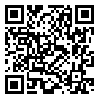Volume 2, Issue 5 (2009)
LCQ 2009, 2(5): 7-40 |
Back to browse issues page
Download citation:
BibTeX | RIS | EndNote | Medlars | ProCite | Reference Manager | RefWorks
Send citation to:



BibTeX | RIS | EndNote | Medlars | ProCite | Reference Manager | RefWorks
Send citation to:
Parsanasab M. Motif: Definitions, Types, Functions and …. LCQ 2009; 2 (5) :7-40
URL: http://lcq.modares.ac.ir/article-29-4957-en.html
URL: http://lcq.modares.ac.ir/article-29-4957-en.html
Tarbiyat Moallem University
Abstract: (9289 Views)
One of the problems which prevent a correct or common comprehension of a fiction and its precise analysis is the diversity which exists in understanding and using the common terms in fiction domain. Although most of these terms have been listed in dictionaries and used by researchers, there is no unanimity about their usage. Due to this matter, distinction of fiction's elements and the analysis of narratives confront some difficulties. In this paper we intend to revise one of the most common terms in narratology i.e. motive, focusing on dependent motive and independent motive. Hence it is necessary to criticize the most important definitions in dictionaries for motive, to show their credibility and the degree of their expressiveness and to present our definitions. Also, all types of motives in traditional Persian fictions will be categorized and their four functions in narration will be explained. In our point of view, motive is a structural – semantic term that is related more to structural elements of a story than to its semantic aspects.
Subject:
Street literature
Received: 2009/01/6 | Accepted: 2009/06/8 | Published: 2010/03/6
Received: 2009/01/6 | Accepted: 2009/06/8 | Published: 2010/03/6
| Rights and permissions | |
 |
This work is licensed under a Creative Commons Attribution-NonCommercial 4.0 International License. |








